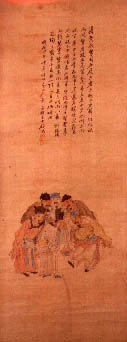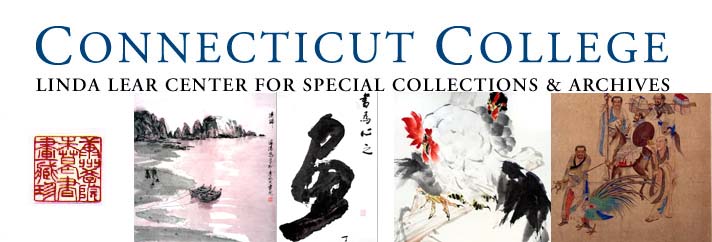Human Figure Paintings
Ku Lo (1763 - 1837?)
Ball Playing
Hanging Scroll, Chinese Ink on Rice Paper , 38 7/8 x 14 3/4 in., (98.75 x 37.5 cm.)
 Written records and historical evidence show that figure painting was the earliest form of painting in China. It was usually used as a didactic, or religious, or secular tool. Before the 10th Century, figures generally tended to be delicate, detailed and highly ornamented, since Sung dynasty (960 - 1279) developing into simper demonstrations of the power of the brush, be it fine line or bold brush work.
Written records and historical evidence show that figure painting was the earliest form of painting in China. It was usually used as a didactic, or religious, or secular tool. Before the 10th Century, figures generally tended to be delicate, detailed and highly ornamented, since Sung dynasty (960 - 1279) developing into simper demonstrations of the power of the brush, be it fine line or bold brush work.
Subjects vary from emperors, court ladies, nobles, scholars, to Buddhist images. The method of painting may be Bai miao (contour drawing) or splashed ink. The former stresses skill with free and fine lines, the latter demonstrates quick and spontaneous strokes. In China, figure paintings are not necessarily true likenesses. There is no need for identifying inscriptions. Sure lines, powerful brush strokes and economy of detail are important. Light colors are optional.
The inscription on Ku Lo's "Ball Playing" describes and Emperor, two princes, a general and two high officials preparing for a ball game. He tells a story, but does not necessarily portray real likeness of the people. His technique is thin, delicate line drawing. The simply designed robes are in soft colors. Each player has an individual facial or eye expression.
History offers little information on Ku Lo's life. He was a professional artist from South China who painted his figures inancient attire, elegant and peaceful. He died a poor man. To cheer himself he kept a seal, which reads, "Art keeps me young."
Purchased with funds provided by Charles and Mary Ann Siegel and their familyin 1995.
